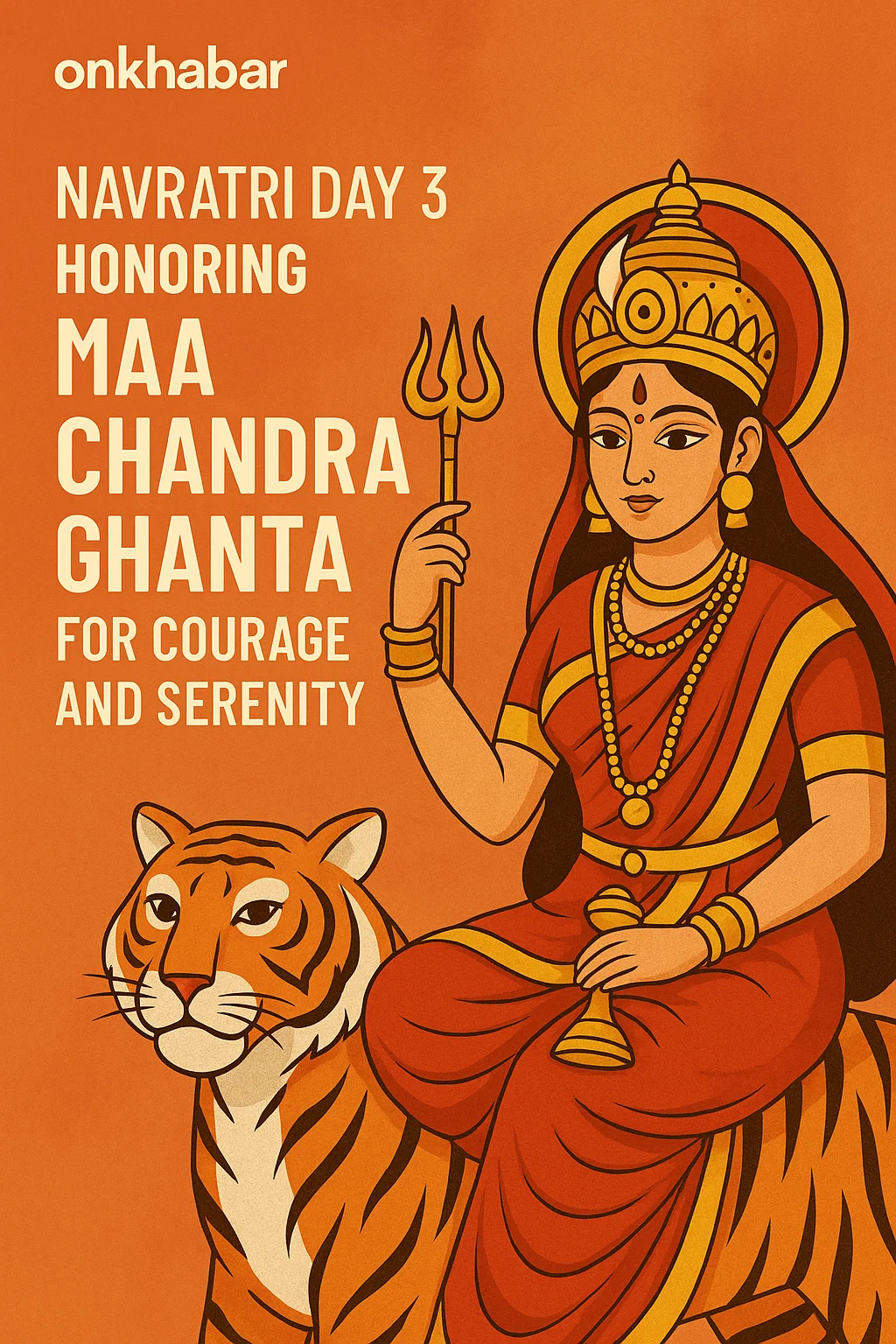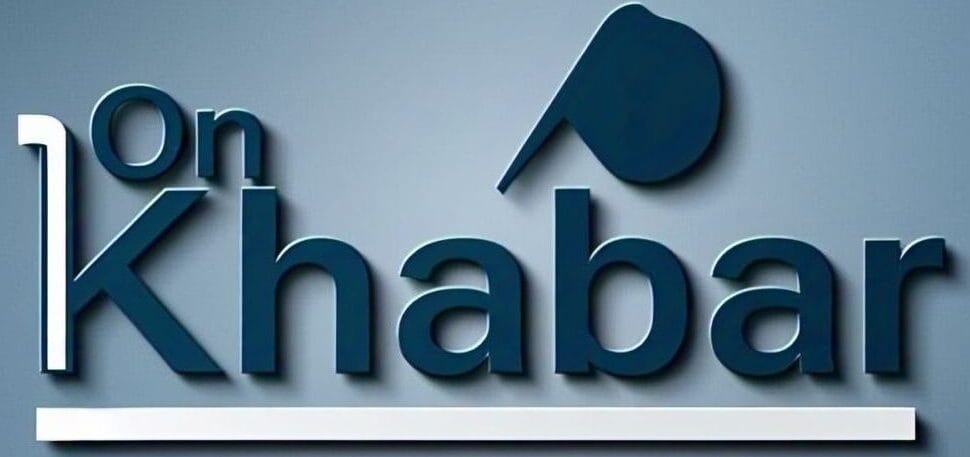
Navratri, the nine-night festival celebrating the Divine Feminine, is a journey of spiritual awakening. Each day is dedicated to a unique form of Goddess Durga, guiding us through different aspects of life and consciousness. On the third day of Navratri, we worship Maa Chandraghanta, the embodiment of peace, bravery, and courage.
This day is a powerful opportunity to seek her divine grace to overcome obstacles and eliminate negativity from our lives. Let’s delve into the significance, rituals, and blessings associated with this auspicious day.
Who is Maa Chandraghanta?

Maa Chandraghanta is the third manifestation of Goddess Durga. Her name is derived from the half-moon (Chandra) on her forehead, which is shaped like a bell (Ghanta). This iconic symbol is not just an ornament; it is believed that the sound of her bell terrifies evil forces and protects her devotees.
She is depicted as a goddess of immense power and serenity. With a golden complexion, ten arms holding various weapons and symbols like a trident, lotus, and bow-and-arrow, and riding a lion or tigress, she represents a perfect balance between fierce strength and tranquil beauty.
The Significance and Blessings of Worshipping Maa Chandraghanta
Worshipping Maa Chandraghanta on the third day of Navratri brings profound blessings:
Courage to Face Challenges: She empowers her devotees with immense bravery and determination to face life’s difficulties without fear.
Inner Peace and Serenity: Her worship is known to remove mental and spiritual negativity, filling the heart with calmness and tranquility.
Protection from Negativity: The sound of her bell is said to ward off evil spirits and negative energies, creating a protective shield around her devotees.
Destruction of Sins: It is believed that sincere devotion to her can help absolve past sins and karmic debts.
How to Worship Maa Chandraghanta on Day 3
Performing a simple puja at home can connect you deeply with the goddess’s energy.
1. The Puja Setup
Begin by cleaning your puja space. Place an idol or picture of Maa Chandraghanta on a clean platform. You can have the Navratri Kalash installed nearby. Light a diya (lamp) with ghee or oil.
2. Offerings (Bhog)
The traditional prasad for Navratri Day 3 is Kheer (a sweet rice pudding). Offering Kheer, which is made from milk and rice, is believed to please Maa Chandraghanta and bring her compassionate blessings. You can also offer yellow flowers, which are associated with this form.
3. Chanting the Powerful Mantras
Chanting mantras is the heart of the worship. Here are the key mantras for Day 3:
Main Mantra:
Om Devi Chandraghantayai Namah
Meaning: “Salutations to the Goddess who has the moon-shaped bell.”
Chant this mantra 108 times to invoke her protective energy.Beej Mantra (Seed Mantra):
Aim Shreem Shaktaye Namah
Meaning: “Salutations to the divine feminine energy.”
This powerful mantra connects you with the core energy of the goddess.The Maha Mantra:
Ya Devi Sarvabhuteshu Maa Chandraghanta Rupena Samsthita, Namastasyai Namastasyai Namastasyai Namo Namah
Meaning: “I bow again and again to the Goddess who resides in all beings in the form of Maa Chandraghanta.”
4. The Color of the Day: Grey
The color for Navratri’s third day is Grey. This color symbolizes peace, stability, and the transformation of negativity into tranquility. By wearing grey, devotees align themselves with Maa Chandraghanta’s energy of creating a calm and balanced mind, ready to face any challenge with composure.
A Simple Guide to Navratri Puja at Home
If you are starting the puja from Day 1, here’s a quick overview:
Cleanse: Thoroughly clean your home and puja area.
Install the Kalash (Ghata Sthapana): On Day 1, sow barley seeds in a pot. Place a Kalash (pot) filled with water, coins, and mango leaves, topped with a coconut. This represents the presence of Goddess Durga.
Daily Worship: Each day, light a diya, offer flowers, chant the specific day’s mantra, and offer prasad.
Aarti: Perform aarti in the morning and evening.
Kanya Puja: On the eighth or ninth day, invite nine young girls, representing the nine forms of Durga, and offer them a meal and gifts.
Frequently Asked Questions (FAQs)
Q1: What is special about Navratri Day 3?
Navratri Day 3 is dedicated to Maa Chandraghanta, who represents bravery, serenity, and courage. She blesses devotees with the strength to overcome obstacles and the inner peace to remain calm amidst life’s chaos.
Q2: Which color should I wear on the third day of Navratri?
The color to wear on the third day is Grey. It symbolizes peace, stability, and the removal of negativity, perfectly aligning with Maa Chandraghanta’s serene yet powerful energy.
Q3: What is the prasad for Maa Chandraghanta?
The special prasad offered to Maa Chandraghanta on the third day is Kheer (sweet rice pudding). It is offered to seek her compassionate blessings.
Q4: What is the mantra for Navratri Day 3?
The primary mantra is “Om Devi Chandraghantayai Namah”. You can also chant the Beej Mantra “Aim Shreem Shaktaye Namah” for strength.
Q5: What does Maa Chandraghanta hold in her hands?
Maa Chandraghanta is depicted with ten arms. She holds various symbolic items, including weapons like a trident (Trishul) and a sword, as well as a lotus, a bow-and-arrow, and a water pot (Kamandal), symbolizing both power and purity.
Q6:Which color is lucky in Navratri?
Which colour is considered most auspicious for Navratri? Answer: The colour green, which is related to Goddess Skanda Mata, is believed to be most auspicious, as she is the creative power of the universe and is associated with the endowment of vegetation and greenery on earth.
Q7:Which aarti to do on Navratri?
| Day | Date | Colour |
|---|---|---|
| 1 | 22nd Sept | White |
| 2 | 23rd Sept | Red |
| 3 | 24th Sept | Royal Blue |
| 4 | 25th Sept | Yellow |
May the divine blessings of Maa Chandraghanta fill your life with courage, peace, and prosperity. Happy Navratri








